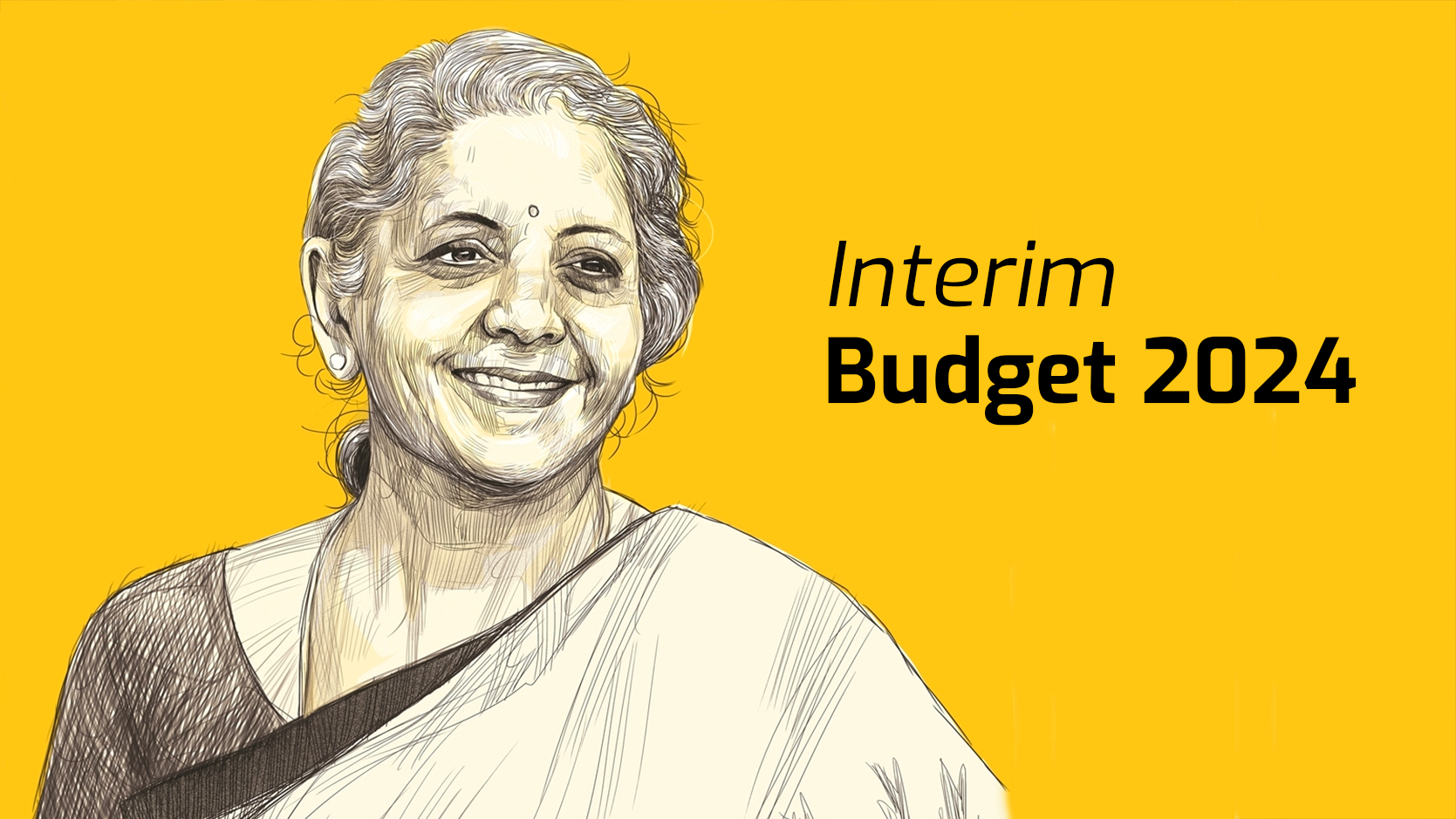Child Betrothals are a Ploy to Evade Punishment: Supreme Court
Why in News?
The Supreme Court urges Parliament to outlaw child betrothals, drawing attention to how they threaten laws like the POCSO Act; the Court also issues guidelines on sex education in schools and a compensation scheme for girls.
Context
The Supreme Court of India, in its recent judgment, condemned child betrothals, considering them a ploy to evade punishment under the Prohibition of Child Marriage Act (PCMA), 2006. The Court called for stronger legislation to address this issue, recognizing the detrimental impact of child marriages on the autonomy and rights of minors.
The bench also emphasized the importance of sex education and community-driven initiatives to prevent child marriages.
Important Aspects
| Aspect | Details |
|---|---|
| Issue Addressed | Child betrothals used to bypass PCMA. |
| Main Concern | Lack of clarity in PCMA on child betrothals. |
| Legal Provisions | PCMA, POCSO Act, Juvenile Justice Act. |
| International Convention | Convention on the Elimination of All Forms of Discrimination against Women (CEDAW). |
| Guidelines Issued | Recommendations for sex education, child marriage reporting, compensation schemes. |
Supreme Court Observations on Child Betrothals
- Child Betrothals:
- Recognized as a loophole bypassing legal consequences under the Prohibition of Child Marriage Act (PCMA).
- Urged Parliament to classify children with fixed marriages as “minors in need of care and protection” under the Juvenile Justice Act.
- Impact on Personal Laws:
- Noted the conflict between personal laws and PCMA.
- The Central government seeks judicial declaration for PCMA to prevail over personal laws; an Amendment Bill from December 2021 is pending in Parliament.
- Boys as Victims: Highlighted that boys also suffer from child marriages, facing societal pressures and patriarchal norms.
- Violation of POCSO Act: Clarified that child marriages violate the Protection of Children from Sexual Offences (POCSO) Act, exposing minors to sexual abuse.
Recommendations from the Court
- Age-Appropriate Sex Education: Suggested implementing culturally sensitive sexuality education in schools to raise awareness about child marriage and sexual rights.
- Community-Driven Initiatives: Recommended a ‘Child Marriage Free Village’ campaign, engaging local leaders similar to the ‘Open Defecation Free Village’ initiative.
- Government Action Plan:
- Establish a designated portal for reporting child marriages (Ministry of Home Affairs).
- Introduce a compensation scheme for girls opting out of child marriages (Ministry of Women and Child Development).
- Allocate an annual budget to prevent child marriages and support affected minors.
Additional Facts and Analysis
- Child Marriage Statistics in India: According to UNICEF (2023), 23.3% of girls in India are married before the age of 18. Child marriage rates are particularly high in rural areas and among marginalized communities.
- Global Comparison: Countries like Nepal, Bangladesh, and Ethiopia have launched national strategies to end child marriage, including community involvement and education drives.
- CEDAW and India: India ratified CEDAW in 1993, committing to eliminate discrimination against women, including the issue of child marriage.
Conclusion
The Supreme Court’s ruling on child betrothals highlights the need for stronger laws against child marriage, promoting comprehensive education and community initiatives to protect minors’ rights and autonomy in India.
Benami law: Supreme Court recalls 2022 judgment that declared amendments unconstitutional
Why in News?
The Bench, headed by Chief Justice of India D.Y. Chandrachud, referred the case for fresh adjudication.
Context
The Benami Transactions (Prohibition) Act, 1988, was enacted to curb the practice of holding property in another person’s name, commonly known as benami transactions. The 2016 Amendment significantly expanded the original Act, allowing stringent actions like imprisonment and property confiscation. However, in 2022, the Supreme Court ruled parts of the amendment unconstitutional, citing concerns over retrospective application and violation of constitutional rights. On October 18, 2024, the Supreme Court recalled this 2022 judgement, referring the case for fresh adjudication.
Supreme Court Action (October 2024)
- Recall of 2022 Judgment: The Special Bench, led by Chief Justice, recalled its earlier judgment from August 23, 2022, concerning benami transactions.
- Background: The recall followed review petitions from the Union Government and the Deputy Commissioner of Income Tax (Benami Prohibition).
- Issues with 2022 Judgment:
- The 2022 ruling declared Section 3(2) of the Benami Transactions (Prohibition) Act, 1988, and Section 5 of the 2016 Amendment unconstitutional due to their retrospective application, violating Article 20(1) (prohibition of retrospective punishment).
- Section 3(2) imposed a three-year imprisonment for transactions between 1988 and 2016, despite the 2016 amendment’s enactment date.
- Section 5 permitted government confiscation of properties involved in benami transactions.
Additional Facts
- Benami Transactions: A benami transaction refers to an arrangement where the property is held by one person but paid for by another, typically to hide illicit wealth.
- Retrospective Legislation: Retrospective laws apply to actions that occurred before the law was passed, which often creates constitutional challenges, particularly concerning fundamental rights like Article 20(1).
Conclusion
The 2024 Supreme Court decision highlights the need for clarity on the constitutional validity of retrospective legislation in financial and property-related laws. The Benami Transactions (Prohibition) Act plays a crucial role in curbing illicit property holdings, but its amendments need careful scrutiny to balance constitutional rights with the objective of curbing black money.
Israel versus the UN: On Tel Aviv’s move and India’s response
Why in News?
India’s stand must keep in mind the UN’s importance in the global order.
Context
India’s decision to stay away from a letter supporting UN Secretary-General António Guterres amidst Israeli criticism raises concerns about New Delhi’s position. The criticism stems from Israel’s actions against the UN system following its conflict with Hamas and broader military actions.
Aspect
| Details | |
|---|---|
| Event Trigger | Israel’s October 2023 military operations post Hamas terror attacks, expanding into attacks on Lebanon, Yemen, and covert operations. |
| Israel’s Stance on UN | Israel accused the UN and its agencies of bias, with Israeli leaders labeling the UN as “anti-semitic.” Attacks were even directed at UN peacekeepers. |
| India’s Position | India abstained from supporting a UN letter signed by 104 countries that criticized Israel’s actions against the UN and Secretary-General Guterres. |
| UNRWA Targeting | Israel targeted UNRWA (United Nations Relief and Works Agency), accusing it of links with Hamas. India has historically supported UNRWA. |
| Risks to India | Indian soldiers are part of the UNIFIL (UN Interim Force in Lebanon), which has been under attack by Israeli forces, increasing security risks for them. |
| Global South’s Unease | Many countries from the Global South, along with European nations, signed letters expressing concern over Israel’s actions against the UN. |
| India’s Strategic Calculation | India’s diplomatic stance is likely influenced by its close bilateral ties with Israel and its desire to balance realpolitik with UN engagement. |
United Nations Interim Force in Lebanon (UNIFIL)
Establishment: 1978, in response to Israeli invasion of Lebanon.
Objective:
- Monitor the cessation of hostilities.
- Assist the Lebanese government in restoring authority in southern Lebanon.
- Ensure peace and security along the Israel-Lebanon border.
Composition:
- Over 10,000 personnel from around 50 nations.
- India is a key contributor with 903 soldiers deployed.
Key Role:
- Acts as a buffer between Israel and Lebanon, preventing escalation of conflicts.
- Provides humanitarian aid and assists in conflict-affected regions.
Relevance for India
- India’s participation strengthens its global peacekeeping profile.
- Risks involved: Recent Israeli attacks on UNIFIL forces highlight dangers, particularly for Indian troops.
Challenges
- Increasing tensions in the region pose threats to peacekeepers.
- The effectiveness of the mission is often questioned due to recurrent violence.
Significance
Reflects India’s commitment to global peacekeeping under the UN framework. Enhances India’s diplomatic standing and involvement in international security.
Conclusion
India’s abstention on a UN letter critiquing Israel raises concerns about its multilateralism amid strategic partnerships and global order commitments.
All eyes on Modi, Xi at BRICS summit in Russia as Delhi and Beijing announce visits
Why in News?
PM Modi’s second Russia visit in 2024 will feature bilateral meetings with BRICS leaders and invited global counterparts.
Introduction
The Indian Prime Minister is set to attend the 16th BRICS Summit in Kazan, Russia, from October 22-23, 2024, at the invitation of the Russian President. The summit is expected to focus on strengthening multilateralism and addressing key global issues.
Theme for 16th BRICS Summit in Russia
“Strengthening Multilateralism for Just Global Development and Security”
Expected Outcomes
- Bilateral Meetings: Focusing on regional and global issues.
- China’s Participation: Anticipation of a bilateral meeting between India and China.
- Strategic Dialogue: Discussions will cover ongoing international challenges, particularly concerning the India-China border standoff.
Background Context
- Original Members: Brazil, Russia, India, China, South Africa
- Expanded Membership: Egypt, Ethiopia, Iran, United Arab Emirates
Economic Significance
Russia emphasizes that BRICS nations are poised to drive global economic growth, reducing reliance on Western influence and enhancing economic sovereignty.
Russia’s Vision
- The position of BRICS as a counterweight to Western powers in global politics and trade.
- The countries associated with BRICS are essentially the drivers of global economic growth.
- Emphasis on increasing freight transportation through the Arctic Sea route and North-South corridor, linking Eurasia with the Indian Ocean.
BRICS Summit
BRICS is an acronym for the grouping of five major emerging economies: Brazil, Russia, India, China, and South Africa.
Purpose: To promote peace, security, and development in a multipolar world. Enhance cooperation in various sectors, including economy, trade, investment, and cultural exchange.
Objectives:
- Strengthening economic ties among member countries.
- Reforming global governance structures to reflect contemporary geopolitical realities.
- Addressing issues like poverty alleviation, sustainable development, and climate change.
India and BRICS
India is an important member of the BRICS group, and its participation in the organisation has been beneficial in many ways. Some of the key reasons why BRICS is important for India are:
- Strategic cooperation: BRICS offers India a key platform for global engagement on security, terrorism, climate, and trade.
- Economic benefits: As a BRICS member, India gains access to a large market of 3+ billion people, offering vast business opportunities.
- Reform of multilateral institutions: India has been able to work with other member countries to promote a more inclusive and equitable global order by promoting multilateral reforms.
- South-South cooperation: India has been able to use the platform to promote south-south cooperation in areas such as trade, investment, and technology transfer.
- Pillar of the New World Order: In the fifteenth BRICS, the leaders called BRICS the pillar of the New World Order.
- Dilemma: However, the challenge before India is to choose between a China-centric or a West-centric world order or balance the two.
Conclusion
The BRICS summit in Kazan is vital for India’s diplomacy and collaboration, impacting geopolitical dynamics against Western policies.
House panel to study armed forces’ preparedness to deal with ‘non-kinetic warfare’
Why in News?
The committee picked the subject on urging of Leader of Opposition in Lok Sabha, who argued that the future warfare will be fought using these methods.
Context
The Parliamentary Standing Committee on Defence has selected the issue of Indian armed forces’ preparedness to deal with “hybrid and non-kinetic warfare” for deliberations. The Leader of Opposition highlighted the growing threat of such warfare, citing ongoing conflicts like the Russia-Ukraine war and the Israel-Palestine conflict.
What is Non-Kinetic Warfare?
- Definition: Non-kinetic warfare refers to methods of warfare that go beyond traditional military tactics, including electronic, cyber, information, psychological, and economic warfare.
- This concept is rapidly evolving and is seen as a critical future threat. Non-kinetic warfare can involve non-military stakeholders and can be more deadly than traditional methods.
- For example, cyberattacks on critical infrastructure such as power grids or hospitals can cripple a nation without the use of physical force.
Differences Between Kinetic and Non-Kinetic Warfare
| Kinetic Warfare | Non-Kinetic Warfare |
|---|---|
| Relies on physical force, weapons, and troops | Involves cyber, electronic, psychological, and information warfare |
| Direct military engagement | Can be carried out remotely (e.g., cyberattacks) |
| Examples: Conventional battles, air strikes | Examples: Cyberattacks, misinformation campaigns, economic sabotage |
Counter-Drone Technologies
The Indian Armed Forces are working on both kinetic and non-kinetic solutions to neutralize drones and drone swarms, which have emerged as disruptive elements in recent conflicts like the Ukraine war.
- Kinetic Solutions: Destroying drones physically using weapons.
- Non-Kinetic Solutions: Using jamming technologies, lasers, and electromagnetic waves to disrupt drone operations.
Strategic Operational Preparedness
The House panel will also review the armed forces’ preparedness in terms of cyber, kinetic, and non-kinetic warfare. Other aspects such as anti-drone capabilities and the India-China border stand-off along the Line of Actual Control (LAC) will be assessed.
Indigenous Defence Production
The committee will review progress in indigenous defence production and related issues such as resettlement policies for ex-servicemen and healthcare facilities.
Key Initiatives in Future Warfare Training
A notable development is the tri-services “future warfare” course that covers the operational and technological aspects of modern warfare, preparing officers from Major General to Major ranks across services for the complexities of contact and non-contact warfare.
Additional Relevant Facts
- Cybersecurity Infrastructure: India needs to significantly upgrade its cybersecurity infrastructure to defend against non-kinetic threats, particularly from state and non-state actors.
- Artificial Intelligence (AI): AI is increasingly being integrated into warfare for both defensive and offensive non-kinetic strategies, including automated response systems to cyberattacks and intelligence gathering.
Recommended Steps for Armed Forces:
- Capacity building in cyber warfare.
- Investment in AI and machine learning technologies.
- Collaboration with the private sector for developing indigenous defence technologies.
Conclusion
Studying non-kinetic warfare is vital for India’s defense readiness, emphasizing cyber, psychological, and electronic strategies for future conflicts without traditional arms.
How ‘smart insulin’ promises to revolutionise diabetes treatment
Why in News?
Scientists have developed a breakthrough “smart” insulin that responds in real-time to blood sugar fluctuations, termed the “holy grail” of diabetes treatments.
Overview
The development of “smart insulin,” which reacts to real-time fluctuations in blood sugar levels, marks a significant breakthrough in diabetes management. This innovation aims to ease the burden of constant blood sugar monitoring and insulin dosage adjustments for millions affected by diabetes globally.
Global Diabetes Statistics
- Prevalence: Over 500 million individuals suffer from diabetes worldwide.
- Mortality: Approximately 7 million deaths occur annually due to diabetes-related complications.
Types of Diabetes
| Type | Description | Insulin Dependency |
|---|---|---|
| Type 1 Diabetes | Autoimmune condition leading to insufficient insulin production. | Requires lifelong insulin therapy. |
| Type 2 Diabetes | Insulin resistance, often associated with obesity. | May require insulin in advanced stages. |
Current Treatment Challenges
Patients with diabetes must constantly monitor blood sugar levels and adjust insulin dosages, which can lead to severe health risks, including hypoglycemia (dangerously low blood sugar).
Smart Insulin: NNC2215
Recent research published in Nature highlights the creation of a new insulin variant, NNC2215, engineered to be glucose-sensitive.
Mechanism of Action:
- Structure: NNC2215 consists of:
- A ring-shaped structure
- A glucoside that mimics glucose
- Functionality:
- At low blood sugar levels, the glucoside keeps insulin inactive.
- As glucose levels rise, glucoside is displaced by glucose, activating insulin to lower blood sugar levels.
Clinical Implications
- Initial Results: Demonstrated effectiveness in lowering blood glucose levels in animal models (rats and pigs).
- Future Directions: Human trials are anticipated, focusing on refining the activation mechanism to ensure a gradual insulin response.
Conclusion
Smart insulin represents a potential shift in diabetes treatment paradigms, aiming to improve the quality of life for millions of patients. Ongoing research and human trials will determine its efficacy and safety in long-term diabetes management.
Usurious pricing by NBFCs, apps: Why the RBI acted against 4 entities and how borrowers end up paying excessive interest
Why in News?
The main complaint against the four lenders is about exorbitant interest charges levied by them.
What is a Non-Banking Financial Company (NBFC)?
- A NBFC is a financial institution that provides banking services without meeting the legal definition of a bank, i.e. one that does not hold a banking license.
- It is established as a company registered under the Companies Act, 1956 but its operations are often still covered under a country’s banking regulations.
- NBFCs may be engaged in the business of loans and credit facilities, savings products, investments and money transfer services.
- The Reserve Bank of India is entrusted with the responsibility of regulating and supervising the Non-Banking Financial Companies by virtue of powers vested under Reserve Bank of India Act, 1934.
Current Scenario
The Reserve Bank of India (RBI) has taken significant action against four non-banking finance companies (NBFCs) for engaging in unethical lending practices, particularly usurious interest rates. This move aims to protect borrowers from exorbitant charges and ensure a transparent lending environment.
Background
In recent years, there has been a surge in complaints regarding high interest rates and exploitative recovery methods employed by NBFCs and digital lending applications. This issue has raised serious concerns about borrower protection and the integrity of financial systems.
Regulatory Concerns
The RBI’s actions stem from multiple violations observed in the pricing policies of these NBFCs. The main complaints include:
- Excessive Interest Rates: High Weighted Average Lending Rates (WALR) and interest spreads over the cost of funds.
- Non-Compliance: Failure to adhere to regulatory guidelines concerning household income assessment and repayment capabilities.
- Irregular Loan Recovery Practices: Aggressive and unethical loan recovery methods, including harassment and misuse of borrower data.
Recent Developments
In September 2022, the RBI introduced guidelines to safeguard customers from predatory lending practices, which included:
- Transparent Pricing: Mandatory upfront disclosure of interest rates.
- Informed Borrowing: Ensuring borrowers understand the terms before loan disbursement.
- Economic Assessment: Evaluating the economic profile of borrowers prior to loan approval.
Digital Loan App Repository
To combat illegal lending practices, the RBI has decided to create a public repository of digital lending apps (DLAs) associated with regulated entities. This initiative aims to help customers identify legitimate lending platforms and avoid fraudulent apps.
Case Study: Harassment Incident
In a notable case, a woman was inundated with calls from 25 different numbers, demanding repayment for a loan she never took. Such incidents highlight the urgent need for regulatory oversight and borrower protection.
Conclusion
The RBI’s proactive measures aim to create a safer lending environment in India, safeguarding consumers from usurious practices prevalent in the digital lending landscape. With the establishment of a digital lending app repository, it is hoped that transparency and accountability will improve in the financial sector.
Environment
A perilous highway to salvation in the Himalayas
Why in News?
There is growing scientific evidence that the Char Dham Highway Project will have catastrophic consequences for the mountain ecology.
Overview
The Char Dham Highway Project aims to boost religious tourism and improve military logistics. However, growing scientific evidence suggests that the project poses severe risks to the fragile Himalayan ecosystem. The 900-km long highway, spanning four sacred shrines, risks landslides, subsidence, and ecological degradation, while neglecting scientific assessments. This raises concerns about the sustainability and safety of infrastructural projects in the Himalayas.
Aspects of the Char Dham Highway Project
| Aspect | Details |
|---|---|
| Cost | ₹12,000 crore |
| Purpose | Enhance connectivity for religious tourism and military transport in Uttarakhand. |
| Concerns | Increased landslides, ecological damage, non-compliance with environmental norms, and bypassing impact assessments. |
| Locations Affected | Rishikesh, Joshimath, and other areas in Uttarakhand Himalayas. |
| Main Cause of Landslides | Road-widening activities leading to doubled landslide incidents (309 landslides along a 247-km stretch). |
Impact of the Char Dham Highway Project
- Increased Landslides: The road-widening has caused a spike in landslides. A study documented an average of 1.25 landslides per kilometre between Rishikesh and Joshimath.
- Environmental and Geological Fraud: The project ignored geological and environmental norms. Encroachment and blasting have destabilized the region’s ecosystem, leading to irreversible environmental damage, as confirmed by a series of expert reports overruled by authorities.
- Climate Change and Increased Risk: The Himalayan region is predicted to experience more extreme rainfall events due to climate change, exacerbating landslides and fatalities.
- Displacement and Land Abandonment: Census data shows that many villages are depopulated due to migration, further aggravated by infrastructural projects. The shift from agriculture to tourism-driven livelihoods has led to local distress.
Additional Facts
- Himalayan Ecology: The Himalayas are highly sensitive to seismic activity, weather patterns, and human-induced disturbances due to their young and fragile geological composition.
- Monsoon Variability: Studies predict that the intensity of the Indian summer monsoon will increase, leading to higher rainfall and landslides.
- Legal Provisions: The Environment Protection Act, 1986, and Forest Conservation Act, 1980, are relevant laws, but often bypassed using technical loopholes in large infrastructure projects.
- Local Migration Trends: Migration in Uttarakhand is also driven by limited livelihood opportunities in agriculture, which are further reduced by environmental degradation caused by projects like Char Dham Highway.
Forecasting better in India, come rain or shine
Why in News?
With improvements, the ‘Mausam Mission’ will transform how weather information can help India become climate smart.
Overview
India faces a rising frequency of extreme weather events, necessitating improved weather forecasting to safeguard its population. The government has launched the “Mission Mausam” in 2024, aimed at enhancing weather observation systems and weather forecasting models to tackle these challenges.
Objectives of Mission Mausam
- Expand India’s Weather Observation Network: Installation of Doppler Weather Radars (DWRs) and other platforms in regions lacking coverage, especially in high-risk urban areas and the western coast.
- Improve Weather Forecasting Models: Utilize advanced techniques like machine learning and improved understanding of atmospheric physics.
- Open Access to Weather Data: Facilitate innovation by making weather data available to researchers, institutions, and entrepreneurs.
- Strengthen Communication Tools for Early Warning Systems: Improve user experience and capacity to interpret weather warnings through accessible platforms and educational tools.
Issues and Proposed Solutions
| Issue | Current Scenario | Proposed Improvements |
|---|---|---|
| Radar Coverage | 39 DWRs across India; only 5 on the western coast, none in key cities like Ahmedabad and Bengaluru. | Prioritize installation of new DWRs in under-monitored regions and urban centers at risk of extreme weather. |
| Data Access | IMD provides data but with restrictions, limiting access to researchers and entrepreneurs. | Make weather data from radars, wind profilers, and radiometers openly accessible, similar to the US and European models. This will promote innovation in early warning systems and analytical tools. |
| Communication of Warnings | IMD’s web and mobile apps provide district-level warnings but lack clear instructions on how to act on these warnings. | Enhance the user interface and provide guidance on interpreting warnings. Include videos, tutorials, and media campaigns to build capacity in understanding and responding to weather alerts. |
| Extreme Weather Forecasting | Two-thirds of India’s population is exposed to flood risks, but only one-third has access to early warning systems. | Expand forecasting systems similar to cyclone warnings and extend coverage for floods, heatwaves, and droughts. |
Enhancing Weather Preparedness
- Mission Focus Areas:
- Strengthen radar coverage in high-risk areas.
- Democratize weather data for public and research use.
- Modernize the communication channels to ensure last-mile connectivity in remote regions.
- Technological Integration:
- Leverage machine learning and artificial intelligence to refine models for hyper-local weather forecasting.
- Potential Benefits:
- Improved early warnings will reduce the economic and social impacts of climate-related disasters.
- Data-driven decisions in sectors like agriculture, energy, and urban planning will foster resilience.
Way Forward for Weather Forecasting in India
- Expand Infrastructure: Increase Doppler Weather Radars (DWRs) in vulnerable areas.
- Open Data Access: Ensure public access to weather data for innovation.
- Leverage Technology: Use AI for forecasting and enable crowdsourced monitoring.
- Improve Communication: Develop user-friendly weather tools and public education.
- Foster Collaboration: Enhance inter-agency coordination and private sector involvement.
- Invest in Research: Boost funding for meteorological research and explore weather modification techniques.
There is a start-up revolution in India
Why in News?
Government’s impetus to innovation has taken entrepreneurship beyond Tier-1 cities.
Overview
India is witnessing a remarkable transformation in its start-up ecosystem, driven by government initiatives that extend beyond Tier-1 cities to democratize entrepreneurship. The country has emerged as a global leader in innovation and technology, now hosting the third-largest start-up landscape worldwide.
Facts and Statistics
Contributing Factors to the Start-Up Ecosystem
India’s ascent in the start-up space can be attributed to several key initiatives:
- Robust Innovation Ecosystem:
- Development of technology business incubators and science parks through the NIDHI program.
- Collaboration between public institutions and private start-ups to commercialize innovations.
- Government Initiatives:
- The Atal Innovation Mission (AIM) has established over 4,880 operational Atal Tinkering Labs and 102 incubation centers across the country, nurturing more than 900 startups.
- Public-private partnerships for redeveloping railway stations initiated by NITI Aayog.
- Policy-Driven Innovation:
- Focus on strategic sectors such as electric vehicles, biotechnology, and alternative energy to optimize innovation.
- Notable Progress Indicators:
- Significant advancements in patent origination and cultural service exports.
- High innovation quality compared to other lower-middle-income countries.
Impacts of the Initiatives
- The initiatives have not only improved rankings but also fostered a culture of innovation at the grassroots level, with young innovators and entrepreneurs emerging across the nation.
- This cultural shift indicates a promising future for India’s innovation ecosystem, potentially creating a cascade effect that will enhance its global standing.
Conclusion
India’s transformation into a start-up powerhouse reflects the vision and commitment of its leadership. The concerted efforts in fostering innovation are paving the way for a more inclusive and dynamic entrepreneurial landscape.
Array




